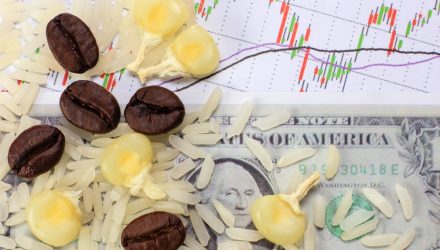Natural gas is one of the most volatile commodities. The United States Natural Gas Fund (NYSEArca: UNG) paints that picture and history shows even some professional traders get burned by the commodity also known as “natty.”
The natural gas market and related ETFs may not see any relief soon as the supply glut extends well beyond the U.S. borders and overseas markets experience a steep plunge in prices for liquefied natural gas.
“There are multiple pressure points on natural gas, including the market being oversupplied and the transition to alternative energy sources. Indeed, it’s tough getting involved with natural gas ETFs and there appears to be a lot going against these products at the moment, but for tactical investors, there may be some opportunity in this category,” according to InvestorPlace.
One way for investors willing to wager on a natural gas rebound while skirting some volatility is with the income-generating Alerian Energy Infrastructure ETF (NYSEArca: ENFR).
ENFR tracks the Alerian Midstream Energy Select Index (CME: AMEI). ENFR acts as a type of hybrid energy infrastructure ETF, which could help investors capture some of the high yields from MLPs but limits the tax hit from solely owning MLPs. Importantly, many midstream MLPs and energy infrastructure companies are working to deleverage their balance sheets.
Evaluating ENFR
Midstream and MLP businesses are included in the ETF strategies because the segment is fundamentally related to the sector company businesses, can potentially increase yield generation and are historically excluded from S&P 500 and Dow Jones Averages, providing another layer of diversification benefits.
“Adding to the case for ENFR is the fund’s focus on the midstream. Upstream are volatile oil exploration and production companies, which have been slammed by eroding oil prices. Downstream is the refining companies, which have been similarly plagued by eroding margins,” notes InvestorPlace.
MLPs primarily deal with the distribution and storage of energy products, so their business model is less reliant on the commodities market since MLPs profit off the quantity of oil and natural gas they are able to move around. Consequently, MLPs have historically shown a weaker correlation to energy prices over longer periods as MLPs act more like energy toll roads, profiting on the volume of oil moving through their pipelines.
“However, being stuck in the middle may not be a bad idea for energy investors because midstream companies are more defensive and have the possibility to actually grow dividends this year thanks to improving balance sheets,” according to InvestorPlace.
For more investing ideas, visit our Alternatives Channel.
The opinions and forecasts expressed herein are solely those of Tom Lydon, and may not actually come to pass. Information on this site should not be used or construed as an offer to sell, a solicitation of an offer to buy, or a recommendation for any product.








